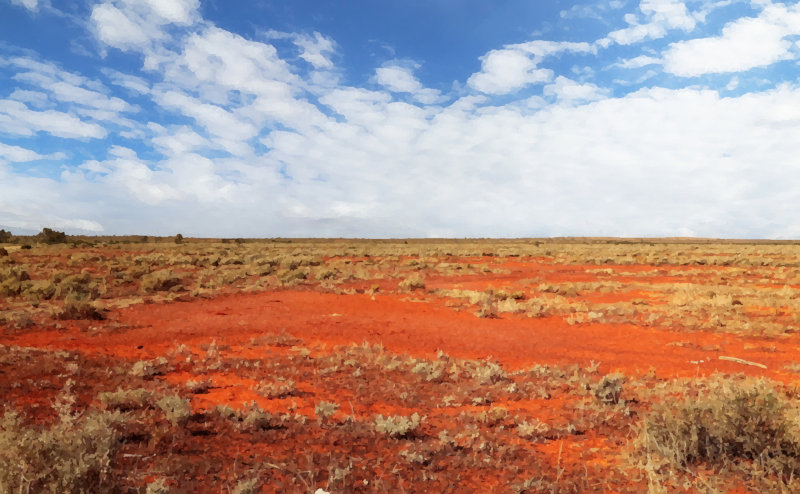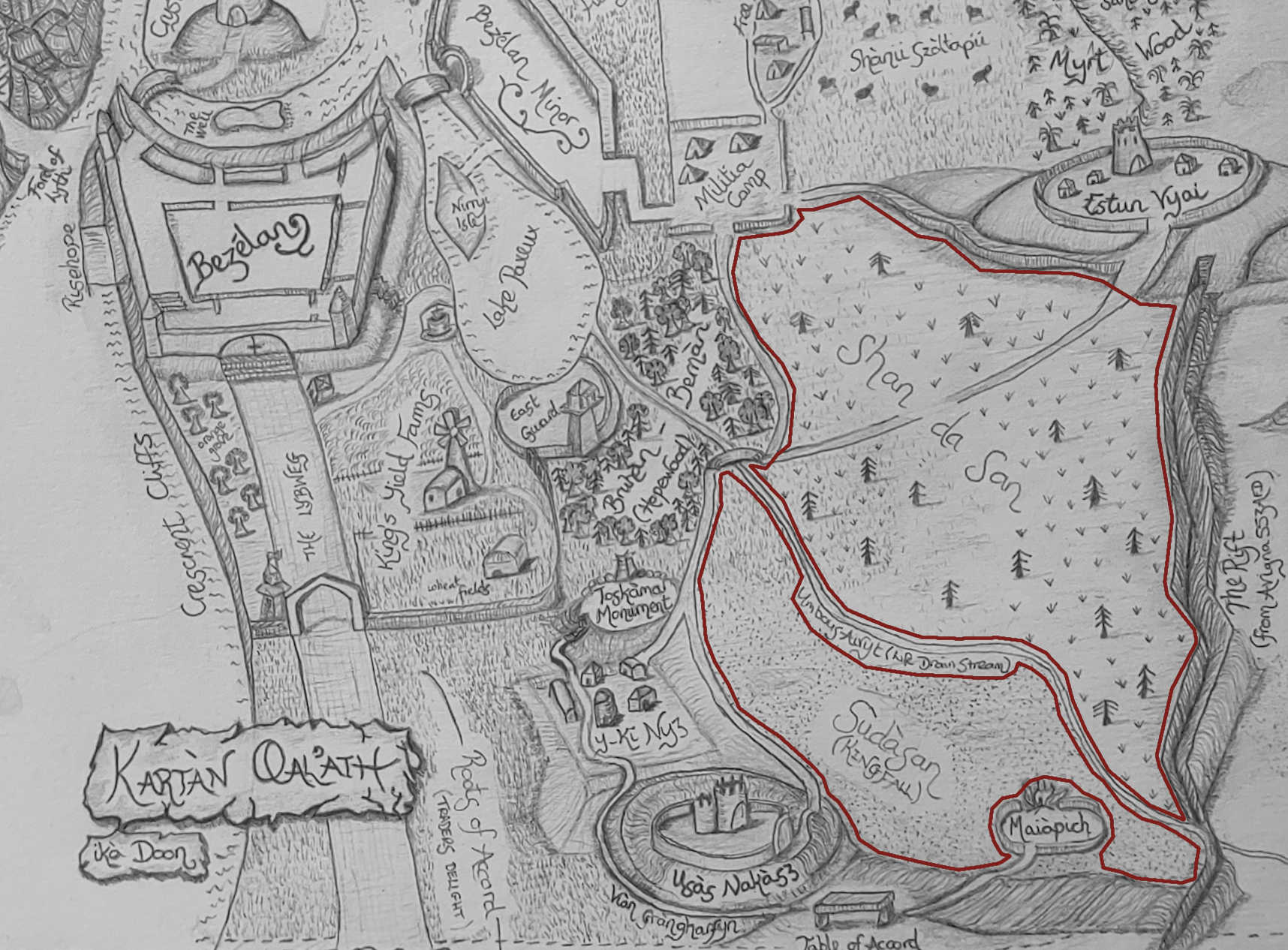Shan da San ([ʃa:n dasa:n])
Shan da San refers to the vast plain in the East of Qal'ath's territory. Its northernmost border begins at the Militia Camp and Estun Vyai with its southernmost aligning with the southern border with the Queendom of Shevezz at the Table of Accord.
 Whichever explanation was favoured, all can agree that a natural wonder was lost that day. Few trees dare to grow in that vast plain, and those that do are often warped and leafless, a permanent scar on the land and a reminder of darker times.
Thus, in ancient Foyiitùn, the name Shan da San - or Bloodfield - was adopted by Qal'ath, Woodsmen and Shevezz after the signing of the peace treaty at the Table of Accord.
Whichever explanation was favoured, all can agree that a natural wonder was lost that day. Few trees dare to grow in that vast plain, and those that do are often warped and leafless, a permanent scar on the land and a reminder of darker times.
Thus, in ancient Foyiitùn, the name Shan da San - or Bloodfield - was adopted by Qal'ath, Woodsmen and Shevezz after the signing of the peace treaty at the Table of Accord.
Natural Division
Strictly-speaking the Shan's western edge aligns with the Umbous Aivyt river, which runs from Lake Paxeux to the Oasis of Tarran. However, it has always been contested on the basis that no one could recall or record over how great an area the final battle of the First Destruction took place. Thus, the area west of the Umbous was named Sùdasàn (Southern Blood) in Foyiitùn and Kingfall in Common Tongue, though that was not a translation of Sudàsàn.Early History
Before the war of the First Destruction, the Shan da San had a different name and meaning: Shanvér Woods (or "Greenfield Woods" purely in Common Tongue). This dense forest nevertheless rivalled The Forest of Doon in geographical spread, though it was less rich in the variety of fauna and flora that flourished there. It boasted a wide offering of trees and bushes, not least the so-called Golden Beech (Bycha Zylva), used to adorn the houses of the wealthy (and the shields of the early Qalathian Army during the war of the First Destruction).Read more on Shanvér Woods →
Cartography Note
As the reader will notice 'Shanvér Woods' is in "Qalafoy" - a mixture of Foyiitùn and Common Tongue. Its Foyiitùn name was Bruhaii Shanvér or Bruhaii Vershàn, and both have the same meaning. Therefore, which labels one discovers will depend wholly on where one finds the maps that reference this location. While we refer to Qalafoy now, such a term did not exist when Shanvér was named. This influence is likely to have been Aevyormii in origin, and the forest was named between the Queendom of Shevezz and the Aevyormii, well before Qal'ath's founding. Qalafoy naming still exists today, not least the Grànousii-an-Ormàszil Ocean, the Stones of Myrn and, of course The Forest of Doon.
How The First Destruction Impacted Shanvér
But, as it often does, the war irreparably and irrevocably changed the Shanvér. The trees fire did not burn were felled by armies on all sides to make fortifications, repair weapons and build campfires. This was also true of the South-West of Doon, an area now known as The Clearing.The Shan da San
So many died in a single day that it is believed their blood permanently stained the ground. Others think that it is the composition of the soil that gives it a red-brown colour but that this had not been discovered during the days when wandering the Shanvér was normal, despite its dangers.
Modern Foyiitùn
While this name still persists among the Woodsmen, its modern translations should be noted, should future researchers scan our archives with Data Crystals: Shàn'sàn and Sanànshàn.
Type
Plain
Owning Organization
Qalathi-Shevezzi Peace Treaty
Estun Vyai
Bruhàn Bernari
Usàs Nakàsz
Table of Accord
Y-Ki Nyz
Maiàpich
Find Nearby Points of Interest
Related Articles Others are coming. Check back for the "Nearby Locations" above. Once they're linked, there is something for you to read!









Comments